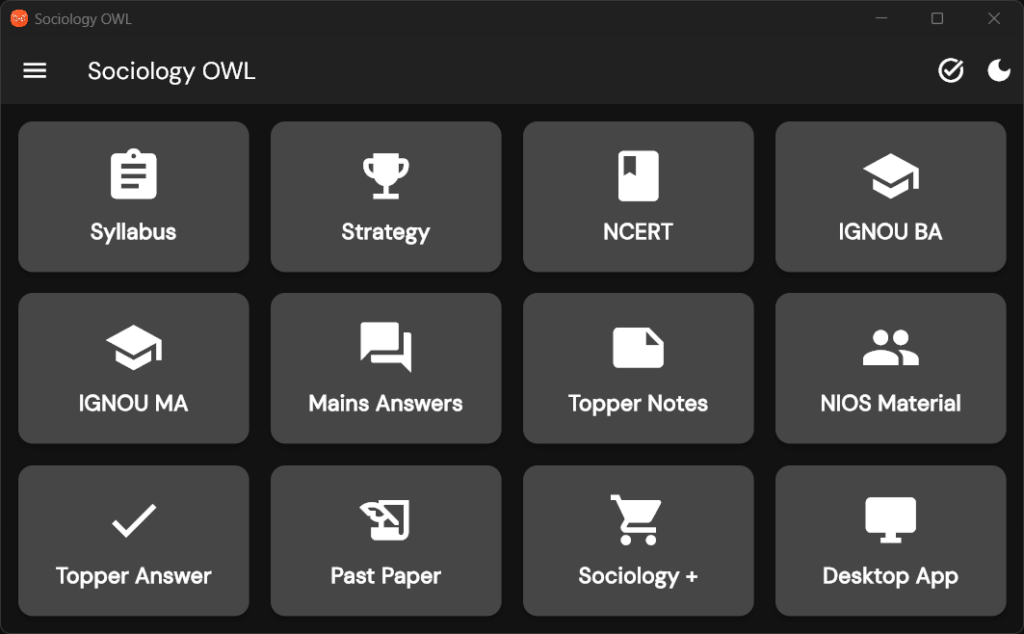Model Answers
Q: Discuss the challenges involved in collecting data through census method.
Question asked in UPSC Sociology 2021 Paper 1. Download our app for last 20 year question with model answers.
Model Answer:
Census Method of Data Collection
Census method of data collection involves gathering demographic information from all members of a population within a specific geographic area. This is typically done through a combination of self-reporting, door-to-door surveys, and online questionnaires. The data collected is used for government planning, resource allocation, and policy-making.
Challenges in Collecting Data through the Census Method
1. High cost: Conducting a census is an expensive process, as it requires hiring and training a large number of enumerators, printing and distributing questionnaires, and processing and analyzing the collected data. For example, the 2020 United States Census cost approximately $15.6 billion, making it the most expensive census in the country’s history.
2. Time-consuming: A census is a time-consuming process, as it requires collecting data from every individual in a population. This can be particularly challenging in large and diverse countries, where it may take several months or even years to complete the data collection process. For instance, the 2011 Indian Census took 21 months to complete, involving around 2.7 million enumerators.
3. Non-response and undercounting: One of the major challenges in conducting a census is ensuring that every individual is counted. Non-response, where individuals do not participate in the census, can lead to undercounting and inaccurate data. This can be due to various reasons, such as lack of awareness, language barriers, or distrust in the government. For example, during the 2010 United States Census, it was estimated that around 16 million people were not counted, leading to an undercount rate of 5.3%.
4. Overcounting: In some cases, individuals may be counted more than once, leading to overcounting. This can occur due to errors in data collection or processing, or when individuals are counted in multiple locations. For example, college students may be counted both at their college residence and their family home, leading to an overcount.
5. Privacy concerns: Collecting data on every individual in a population can raise privacy concerns, as people may be reluctant to share personal information with the government. This can lead to non-response or inaccurate reporting of data. For example, in the 2020 United States Census, there were concerns about the inclusion of a citizenship question, which many believed would discourage participation among undocumented immigrants.
6. Data quality and accuracy: Ensuring the quality and accuracy of the data collected during a census is a significant challenge. Errors can occur during data collection, processing, or analysis, leading to inaccurate results. For example, During the 2011 Census of India, there were reports of various issues that could have affected the accuracy of the data. One such issue was the undercounting of certain populations. For example, it was reported that the homeless and certain nomadic tribes were often missed or undercounted. This is partly because these groups do not have a fixed address, making it difficult for census workers to reach them.
7. Political manipulation: In some cases, there may be attempts to manipulate census data for political purposes, such as gerrymandering or allocating resources based on political affiliations. This can undermine the accuracy and credibility of the census data.
8. Rapid population changes: In areas with rapid population growth or migration, the data collected during a census may quickly become outdated, limiting its usefulness for planning and decision-making purposes.
9. Logistical challenges: Conducting a census can involve significant logistical challenges, particularly in remote or hard-to-reach areas. For example, enumerators may face difficulties in accessing rural or remote communities, or in collecting data from individuals living in informal settlements or slums.
10. Cultural and language barriers: In diverse populations, cultural and language barriers can make it difficult for enumerators to collect accurate data. For example, in the 2011 Indian Census, enumerators had to navigate over 1,600 languages and dialects spoken across the country.
More Questions:
Download our app for UPSC Sociology Optional - Syllabus, NCERT Books, IGNOU Books, Past Paper with Model Answers, Topper Notes & Answer Sheet.


